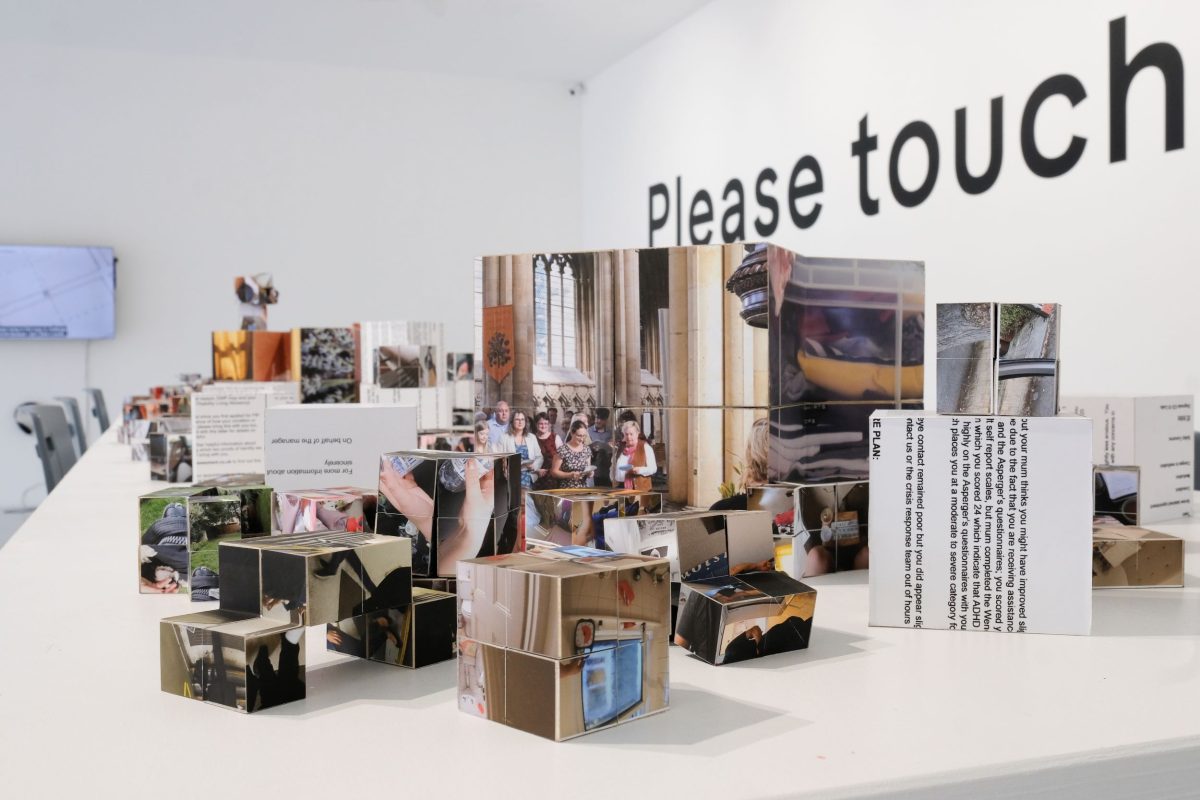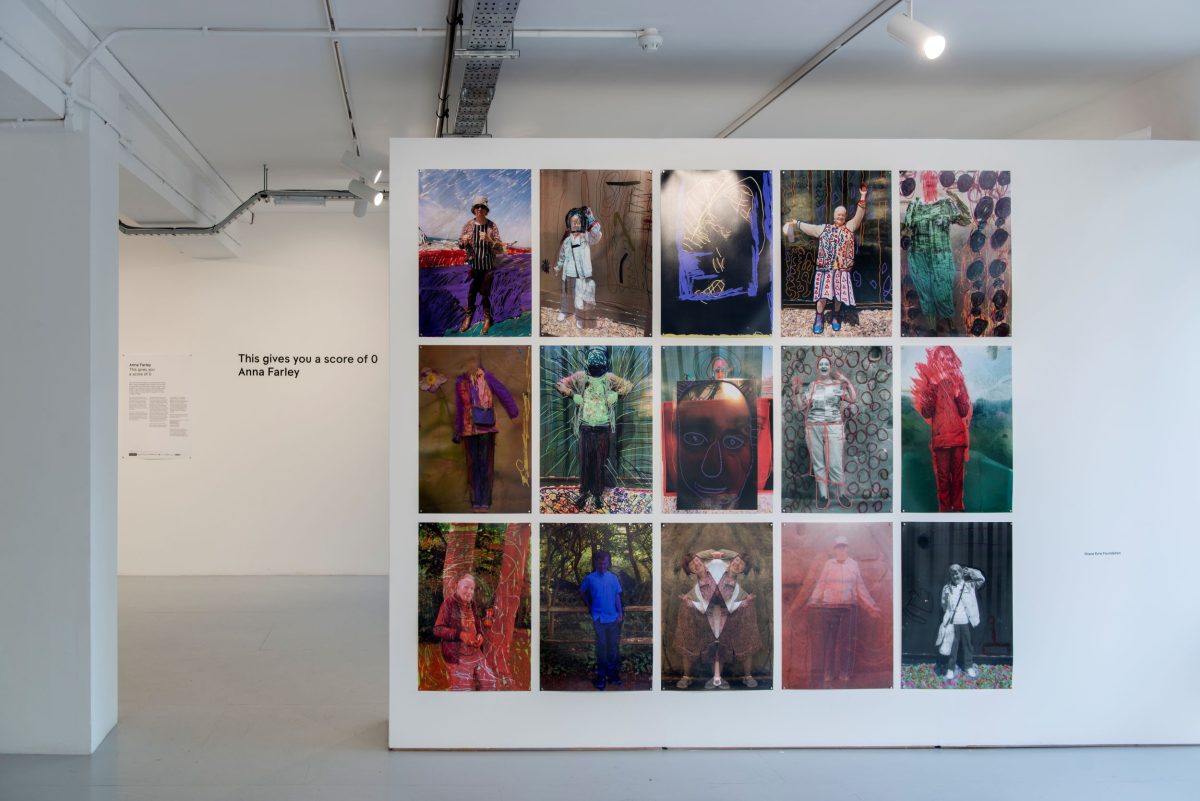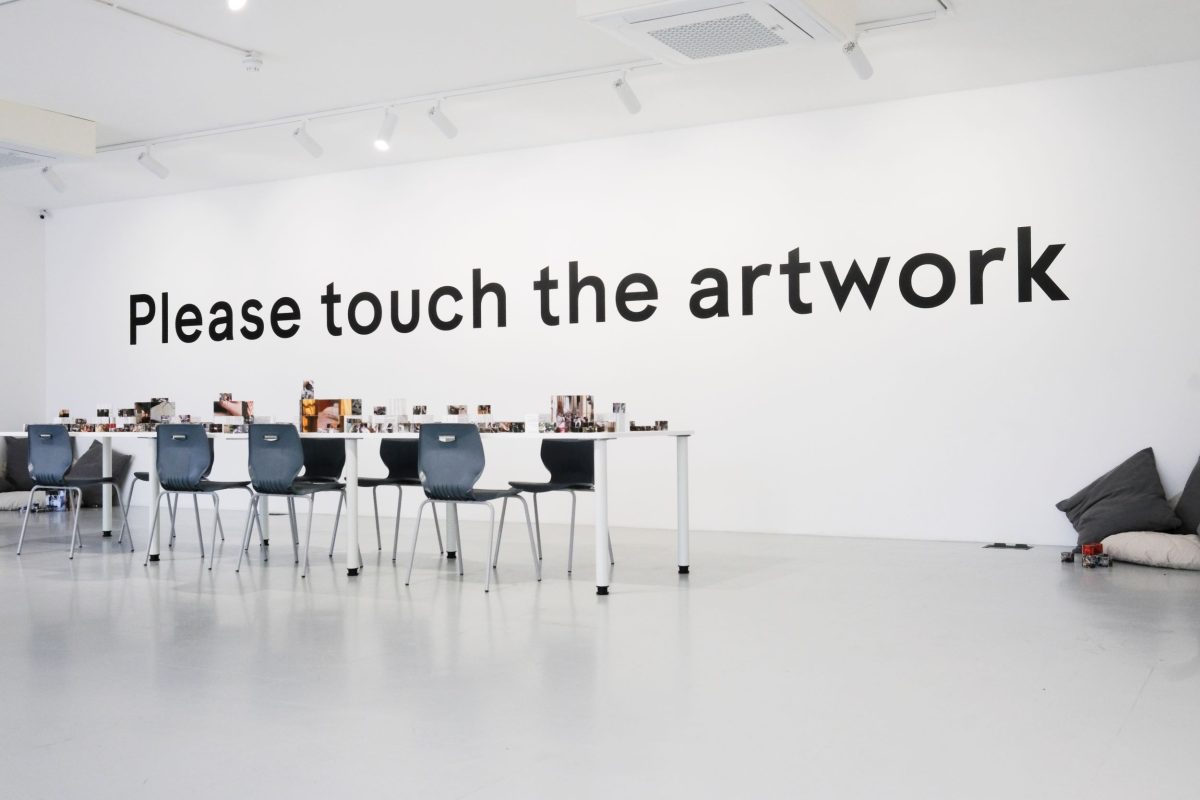From issue: #21 Thingification
Photoworks has been collaborating with neurodivergent artists since 2016, explain Learning and Engagement Consultant Juliette Buss and Curator Julia Bunnemann, evolving the organisation to help more people represent themselves through installations and images.
Juliette Buss is Photoworks’ Learning & Engagement Consultant, working on programmes such as In Focus, which features new commissions designed with and for neurodivergent artists and communities plus inclusive photography clubs and training. In Focus is part of the national Explorers programme, which works to place neurodivergent communities at the heart of social, civic and cultural activity. Julia Bunnemann is Photoworks’ Curator, responsible for programming such as the Photoworks Festival, as well as commissions such as the Jerwood/Photoworks Awards, and the Ampersand/Photoworks Fellowship. Here they discuss Photoworks’ collaborations with neurodivergent artists and art-makers.

Julia Bunnemann: How did Photoworks begin commissioning neurodivergent artists via Explorers: In Focus?
Juliette Buss: It began in 2016 with quite open-ended conversations with Project Art Works, who were applying to Arts Council England re a national creative programme increasing the visibility and representation of neurodivergent artists in contemporary visual art. They asked if we’d like to team up, and we became one of the first Explorers partners. At that point it was a three-year programme, and our ambition was to consider what an inclusive commissioning model might look like and test it. We spent a long time thinking about what this meant, and questioning what an inclusive approach to commissioning might be.
J Bunnemann: How did the programme develop?
J Buss: We spent time with Project Art Works, with their team and in their supported studios for neurodivergent adults, many of whom have complex and profound support needs. We also took part in artist-led workshops with neurodivergent adults and their support workers, as both participants and observers. Eventually we created In Focus, a new solo commission opportunity with a new kind of accessible open call. As a result, artist Anna Farley was supported by Photoworks to make and present new work.
Throughout the entire process we grappled with questions around who decides who is an artist, what it means to be able to self-identify as an artist, and what significance this has for Photoworks, as an organisation that supports artists.
J Bunnemann: Yes, in the curatorial commissions we aim to both invite artists to apply for our various opportunities and extend those invitations to individuals who may not currently identify as artists. We hope someone reading the application might think, ‘Oh, I’ve never thought I am an artist. But this sounds interesting, and I want to share the work I have created’.
J Buss: That’s good to hear, I don’t know that all curators would recognise that. It is important for Photoworks to recognise that some of the people we work with may not identify as artists, but still have the right to platform and share their work. Project Art Works helped us explore that question, encouraging us to think and work beyond the regular routes and places that artists access. We unpicked our processes and reached out. We talked to disability arts organisations and made new partnerships within the adult social care sector. We talked to support workers, some of whom put in applications on behalf of individuals not able to articulate verbally or in writing.
Thinking about Photoworks’ commissioning opportunities, is there a tension between supporting an opportunity to make new work and the pressure of building in an exhibition expectation? If we’re presenting work that’s framed as part of the Photoworks Programme, there are immediately conversations about quality.
J Bunnemann: It starts with the process of selecting, or seeing the potential. There is the question of how a project can be developed, and how the person is willing to create something and turn it into an exhibition. Determining quality comes down to our visual language and history, which is generally not so linear and affected by taste. These are limitations. Another limitation is that, yes, we’re working towards an exhibition date with deadlines and a set timetable. The artist is installing the work with curators, which may be for the public to see.
A certain tension comes into play. Is that pressure necessary? Could there be a discussion around a flexible opening date? Can we ensure artists get a secure location if things are intense? The creative process sometimes benefits from a deadline, to decide if something is ready to be seen. But these parameters could evolve.

Buss: It’s interesting to think about our Ampersand Residency, in which there is no expectation to present work publicly. We show that work differently, platforming and valuing the artist’s process instead. I wonder if that would be valuable in our In Focus commission. It’s tough because we don’t want to take away that platforming opportunity. Increasing visibility and representation for neurodivergent artists is part of what’s important.
Perhaps it’s about offering alternative ways of sharing work. COVID forced us to think more about our digital platforms, for example, and positives came out of that in terms of making films and showcases online. It’s us that needs to think and behave differently, to understand the social model of disability, not expect people to fit our way of working.
J Bunnemann: On the curatorial programme we’ve tried to eliminate as many barriers as we can, but we recognise our partners can also have constraints. We must ensure we can match or counter those, depending on our artists’ needs. With our most recent commission, for example, we took the time to learn how artist Lauren Joy Kennett wanted us to work, and what she needed. Danit Ariel [Photoworks assistant curator] and I meet with Lauren regularly, and we discuss both art and personal matters. This is important when commissioning artists because they see the curator as representing an arts organisation, judging them. Sharing things can help build trust.
We try to be flexible, to determine Lauren’s needs and accommodate her caring duties. For her, it was critical to create a timetable with milestones. Setting a deadline can help to relieve the stress of creating, especially for a project like Lauren’s. Her journey is deeply personal, and that can be both joyful and difficult.
J Buss: Building trust and developing that strong relationship is so valuable, and it’s crucial that this is recognised. It takes time and focus. It’s not something you can just do in between things, which what a lot of us in this sector must do, work fast and jump from one thing to another.
J Bunnemann: It is important for an organisation to carefully plan the programme, and to know the resources are there to take on a commission. But the process begins even earlier, in finding our audience and beneficiaries for our commissions. The unknown for us is to get out of our bubble, to ensure that we as an organisation are being seen and being listened to, but also listening to others and hearing what they need.
J Buss: We’ve worked more closely together to do this haven’t we? Explorers has helped us build deeper connections between curatorial and learning at Photoworks.
J Bunnemann: That is essential because, in the institutional sector, we often think about how we might reach a larger audience. I believe it’s through learning engagement, as that can encourage an audience not yet linked to the art world. There is also the aspect of how to enter the artworld, for example if you live in a remote area. The key here is community and connectivity.

J Buss: There are also conversations to be had about neurodivergence, and the difference in access for people who are neurodivergent and able to self-identify as artists and access the art world, and those who need care in their everyday lives and are reliant on advocates willing and able to navigate on their behalf. How do we really ensure our opportunities are accessible to everyone?
Let’s speak about the significance of specific commissions platforming neurodivergent individuals. We’ve chosen to create an opportunity specifically for neurodivergent artists and create an exhibition opportunity for that work. It’s very specific and we frame it publicly as work created by a neurodivergent artist, which is different to transforming all commissioning opportunities to make them inclusive. I think it’s important we spotlight this, in terms of increasing representation.
J Bunnemann: One of the exciting things is that more neurodivergent artists are coming through our other commissioning opportunities. Some artists need to describe their practice in the context of their neurodivergence, others may be neurodivergent but don’t highlight it. For a long time, dyslexia, dyspraxia ADHD, or autism were seen as weaknesses, and when you made an application, you wanted to hide your weakness. This is slowly starting to change.
J Buss: It’s about recognising and valuing difference, and the importance of increasing representation. I would like to think that at some point, our inclusive approach to commissioning is entirely integrated and becomes normal practice, that neurodivergent representation is an artistic choice not an organisational position on rights and access.
J Bunnemann: It’s interesting to think about the neurodivergent artists we work with, whether they’re making work about their experience of neurodivergence or not.
J Buss: The first Explorers-commissioned artist made work about that experience. It’s never been part of the criteria for selection or a requirement, artists are selected because of the calibre and integrity of their ideas. But it has panned out like that, perhaps because artists often draw on personal experience.
J Bunnemann: One thing to consider is whether we are helping artists put forward a work, rather than being the subject of someone else’s perspective.
J Buss: Yes, and not only with neurodivergent artists. For example, artist facilitators working with our LGBTQ+ young people have lived experience. It’s about a sensitivity of who is taking pictures of who, why, and for what purpose.
J Bunnemann: Similarly, on the curatorial commission we create a mentoring scheme, and we make sure the mentor fits on both a professional and a personal level. We want the artists to work well together and motivate one another.
J Buss: Do you think we can say that Photoworks is anti-thingification?
J Bunnemann: We at least try.
